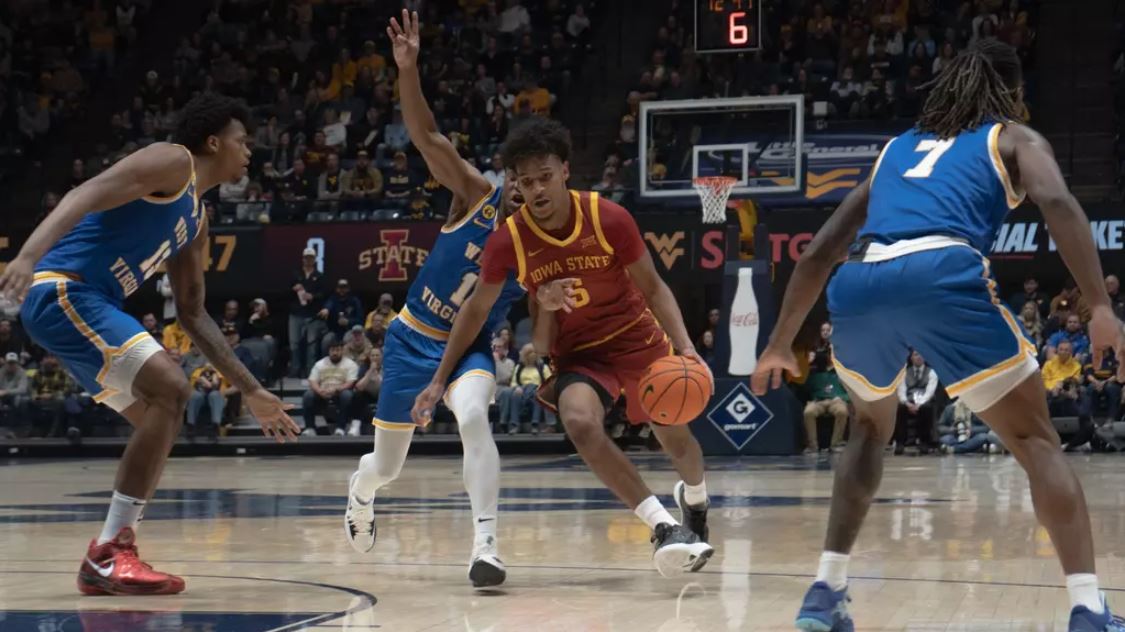Changes in funding rations could alter Iowa State’s character
December 13, 2004
Funding may be changing Iowa State’s identity.
Iowa State has two main funding sources – state appropriations and sponsored funding. The gap in amounts between the two sources is closing, though, and one effect is that the university has increasingly less control over how incoming money is used.
“The strategy of taking away funding sources that allow Iowa State to be independent will be effective in dismantling the university,” said Sidner Larson, at-large representative for the College of Liberal Arts and Sciences in the Faculty Senate.
He said Iowa State’s direction needs to be re-evaluated.
State appropriations are the most significant funding source to Iowa State, said Gary Steinke, deputy executive director for the Board of Regents.
He said state funding from the Legislature acts as the bedrock for Iowa State in that the appropriations can only be used for the operation of the university.
General operations include paying faculty and staff salaries, buying supplies and carrying out daily activities.
The Board of Regents has suggested a policy calling for the Board and regent institutions to enter into a partnership with the Iowa Legislature that would secure guaranteed annual increases of $40 million in state funds to university operating budgets during the next four years, or a total of $160 million from fiscal years 2006 to 2009.
Steinke said sponsored funding is currently helping to make up for smaller state appropriations. But sponsored funding comes with stipulations.
“Sponsored funding cannot, by law, be used for other than what the organizations request their money be used for,” Steinke said.
He said sponsored funding does not pay for the operations of Iowa State.
In four years, from 1999 to 2003, state appropriations dropped from making up about 40 percent of Iowa State’s revenues to about 31 percent, according to the 2003 ISU Fact Book.
Also, in four years, sponsored funding increased from making up about 19 percent of Iowa State’s revenues to about 24.4 percent, according to the fact book.
The majority of Iowa State’s sponsored funding comes from the federal government, such as the U.S. Department of Agriculture, said Sonja Klocker, assistant to the vice provost for research.
Most faculty write proposals to compete for sponsored funding, she said.
Steinke said the state has cut funds to Iowa State for three reasons: Iowa’s economy has dropped, the majority parties in the House and Senate have cut rather than add to the Board of Regents’ budgets, and the regents have not been a priority.
State funding cuts have ramifications, Steinke said.
“Universities won’t have the quality faculty, which are the tools needed to compete for sponsored funding,” Steinke said.
Jane Greimann, former Democratic state representative for the House District 45, said she criticized the state cuts.
“It can only be detrimental to our goals of being competitive,” she said.
If large cuts to the regents’ budgets continue, Greimann said, there will be even harder decisions to make about where to go in the future.
She said universities are being forced to rely on corporations and sponsored funding to survive.
“If you rely on corporations, you don’t get the same non-biased research like when it’s funded though the state,” Greimann said.
Larson said Iowa State has gone a long way downhill.
“There is a real trend of redirecting and hiding of our funding sources,” Larson said.
One thing Iowa State is losing, he said, is classification as a Carnegie research university.
Iowa State will likely lose hold of its tradition of a diverse faculty when positions are cut, Larson said.
Jack Girton, former president of the Faculty Senate and member of the University Resource Policy and Allocations Council, said Iowa State’s budget mainly goes to fund salaries.
Today’s university
Some say the shift in funding sources at Iowa State reflects a shift in the general idea of what a university is.
Pamela Riney-Kehrberg, associate professor of history, said the purpose of the land-grant university was to have a place to train students in the agricultural and mechanic arts, such as home economics.
Iowa State’s land-grant ideal changed historically when William Robert Parks was the university president, from 1965 to 1986. He introduced and achieved the idea of a “new humanism” in the university, according to “Alone Among Friends: A Biography of W. Robert Parks.”
Different colleges were created during that period, such as business administration, design and education. Park’s idea and concern was that science and technology would get ahead of society’s ability to handle it, according to the biography. Parks said, “We should try to integrate science with the human and the humane.”
According to the biography, Parks “challenged the school’s newest alumni not to let difficult economic times and pressures from outside the university ‘siphon off those resources so needed by the total university into narrow single-purpose programs.'”
A new strategic plan, spanning from 2005-2010, will be an indicator of where Iowa State will go in the future.
Sanjeev Agarwal, president of the Faculty Senate, said the strategic plan plays an important role because the Board of Regents must design an entirely new way to fund the regent universities.
He said the final draft of the plan will indicate where Iowa State’s priorities are and will help administrators and regents allocate and reallocate money to different areas that will strengthen Iowa State.
The future direction of Iowa State, outlined by the strategic plan, will be to realign Iowa State’s cash flow in accordance with business, science and technology, Larson said.






